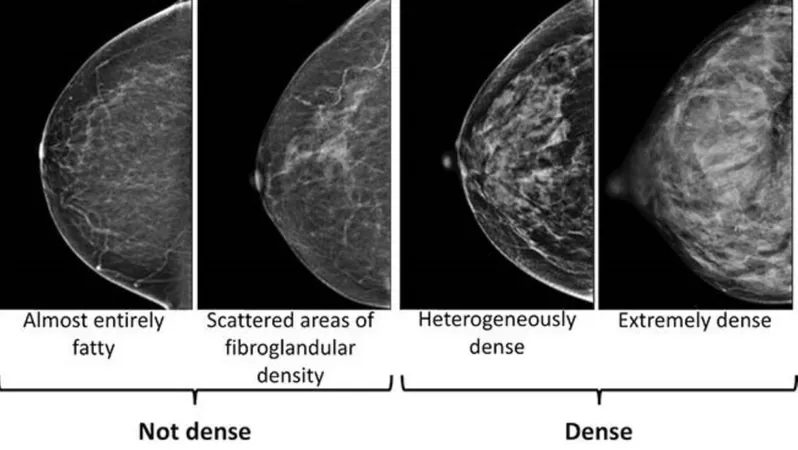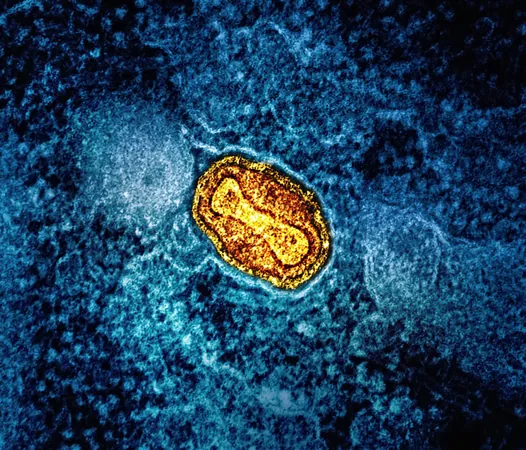
Dense Breasts and Breast Cancer: What You Need to Know
2024-10-12
Author: Benjamin
When women undergo a mammogram, the primary concern is to identify any signs of breast cancer. However, the second crucial aspect is determining the density of their breast tissue, which has garnered increased attention due to a new U.S. regulation. As of early September, mammography centers must now inform women about their breast density—something that was already mandated in several states.
Understanding Breast Density
Are Dense Breasts Harmful?
First and foremost, having dense breasts is not a cause for concern; it's completely normal. Approximately 40% of women aged 40 and older have dense breast tissue. This density does not correlate with the size or firmness of the breasts, and it is primarily relevant within the context of breast cancer screening.
Dr. Ethan Cohen from MD Anderson Cancer Center cautions against panic in light of the new requirements, as many women may have questions stemming from their previous mammogram results.
How Is Breast Density Assessed?
Breast density is classified into four categories by healthcare professionals analyzing mammograms. The classifications range from "almost entirely fatty" to "extremely dense," with dense breasts falling into the categories of "heterogeneously dense" or "extremely dense." However, classification can vary slightly depending on the individual radiologist's interpretation.
Why Density Matters
You're informed of your breast density for two main reasons:
1. Detection Difficulties: Dense breast tissue can obscure cancer on a mammogram. Both dense tissue and cancer appear white on the images, likening it to spotting a snowball in a blizzard, as explained by Dr. Wendie Berg from the University of Pittsburgh School of Medicine.
2. Increased Risk: Women with dense breasts may have a marginally heightened risk of developing breast cancer because these tumors are more likely to arise in glandular and fibrous tissues. Thankfully, studies show that women with dense breasts do not have a higher fatality rate from breast cancer compared to those with less dense tissue.
Next Steps for Women with Dense Breasts
If you discover that you have dense breasts, it is imperative to discuss your family history of breast cancer with your healthcare provider and consider additional screening options such as ultrasounds or MRIs. Although research is ongoing regarding the effectiveness of alternative screening methods, the U.S. Preventive Services Task Force is advocating for more in-depth studies.
Should You Still Get Mammograms?
Absolutely! Regular mammograms remain the best method for early breast cancer detection, with the recommendation to start at age 40 for women, transgender men, and nonbinary individuals who are at average risk.
Dr. Spear from NorthShore University Health System reinforces that mammograms should not be replaced but rather supplemented with further screening tests as needed.
Insurance and Costs
As for insurance coverage concerning additional screenings, this currently varies and depends on individual policies. A bill has been proposed in Congress to require insurers to cover these additional tests, but costs for extra screening can range from $250 to $1,000, posing a financial burden for many.
In conclusion, every woman deserves equal access to early cancer detection methods. Being informed about breast density and potential risks can empower women in their health decisions. Remember, knowledge is power, and early intervention is key in the fight against breast cancer!









 Brasil (PT)
Brasil (PT)
 Canada (EN)
Canada (EN)
 Chile (ES)
Chile (ES)
 España (ES)
España (ES)
 France (FR)
France (FR)
 Hong Kong (EN)
Hong Kong (EN)
 Italia (IT)
Italia (IT)
 日本 (JA)
日本 (JA)
 Magyarország (HU)
Magyarország (HU)
 Norge (NO)
Norge (NO)
 Polska (PL)
Polska (PL)
 Schweiz (DE)
Schweiz (DE)
 Singapore (EN)
Singapore (EN)
 Sverige (SV)
Sverige (SV)
 Suomi (FI)
Suomi (FI)
 Türkiye (TR)
Türkiye (TR)